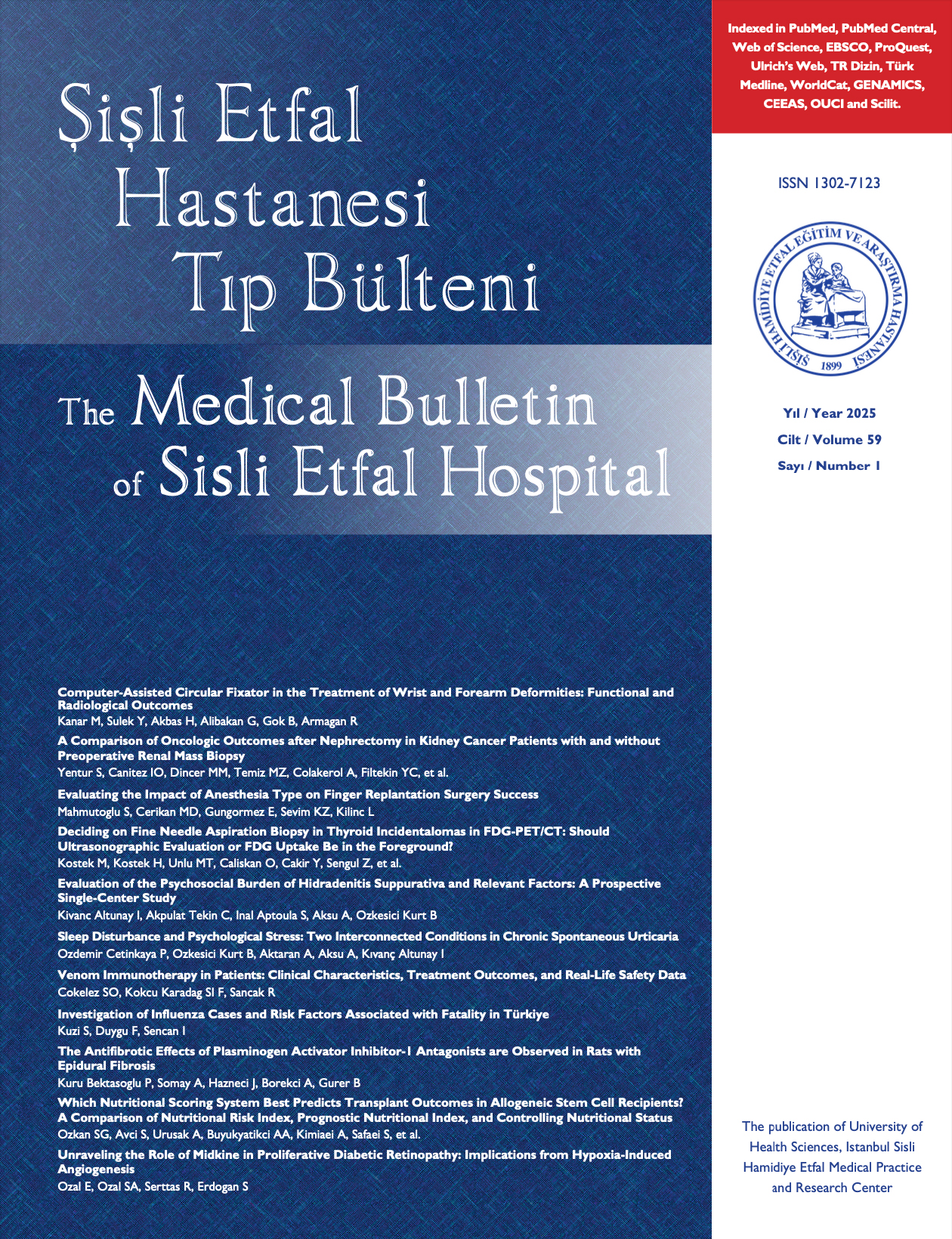
Hyperammonemia and Hepatic Encephalopathy in Pediatric and Adult Liver Intensive Care Unit
Ilhan Ocak1, Mustafa Colak1, Muharrem Battal21Liver Transplant Intensive Care Unit, Başakşehir Çam and Sakura City Hospital, İstanbul, Türkiye2Department of Surgery, Yeni Yüzyıl University Medical Faculty, İstanbul, Türkiye
Objectives: The exact mechanism that causes the neurotoxicity of hepatic encephalopathy (HE) is still unknown. In this retrospective study, we aimed to define the frequency of hyperammonemia and its relationship with HE.
Methods: The records of 190 patients who were followed up in the Organ transplantation and Hepato-pancreato-biliary surgery intensive care unit (ICU) between August 2021 and August 2022 were reviewed retrospectively. 111 adults and children whose ammonia levels were examined during their stay in the ICU were included in the study He was evaluated with West Haven Criteria. HE had grades 04 in the groups.
Results: The median age (range) was 5 (016) children and 60 (20104) adults. The median ammonia value (range) was 42,2 (16314). Hyperammonemia was present in 39 patients (35%) of all patients. Patients with hyperammonemia and grade 0 encephalopathy were 16 (14%), grade 12 patients were 11(10%), and grade 3 patients were 12 (11%).
Conclusion: While our findings and literature evidence strongly support the view that ammonia is the primary factor responsible for, HE development, it shows that factors other than ammonia can only exacerbate HE. In addition, we think that the increased ammonia value in patients with acute liver failure and acute on chronic liver failure is correlated with the increase in the degree of encephalopathy.
Pediatrik ve Erişkin Karaciğer Yoğun Bakım Ünitesinde Hiperammonemi ve Hepatik Ensefalopati
Ilhan Ocak1, Mustafa Colak1, Muharrem Battal21Karaciğer Nakli Yoğun Bakım Ünitesi, Başakşehir Çam ve Sakura Şehir Hastanesi, İstanbul2Yeni Yüzyıl Üniversitesi Tıp Fakültesi, Cerrahi Anabilim Dalı, İstanbul
Amaç
Hepatik Ensefalopatinin (HE) nörotoksisitesine neden olan kesin mekanizma hala bilinmemektedir. Bu retrospektif çalışmada hiperamonyemi sıklığını ve hepatik ensefalopati ile ilişkisini tanımlamayı amaçladık.
Material ve Method
Organ Nakli ve Hepato-Pankreato-Bilier Cerrahisi Yoğun Bakım Ünitesi'nde Ağustos 2021-Ağustos 2022 tarihleri arasında takip edilen 190 hastanın kayıtları geriye dönük olarak incelendi. Yoğun Bakım Ünitesindeki kaldıkları süre boyunca amonyak düzeyi ölçülen 111 yetişkin ve çocuk hasta çalışmaya dahil edildi.West Haven Criteria ile değerlendirildi. Gruplarda 0-4 arası HE grades mevcuttu.
Bulgular
111 hastanın yaş medyan (aralık) 5 (0-16) çocuk ve 60 (20-104) yetişkin idi. Amonyak değeri medyan(aralık) 42,2 (16-314) idi. Tüm hastaların 39'unda (%35) hiperamonyemi mevcuttu. Hiperamonyemi ve evre 0 ensefalopatisi olan hastalar 16(%14), evre 1-2 hastalar 11(%10), evre 3 hastalar 12(%11) idi.
Tartışma ve Sonuç
Bulgularımız ve literatür kanıtlarımız, HE gelişiminden sorumlu birincil faktörün amonyağın olduğu görüşünü güçlü bir şekilde desteklerken, amonyak dışındaki faktörlerin sadece HE'yi alevlendirebileceğini göstermektedir. Ek olarak ALF'li ve ACLF'li hastalarda artan amonyak değerinin ensefalopati derecesindeki artışla korele olduğunu düşünmekteyiz. (SETB-2022-09-215)
Manuscript Language: English



















